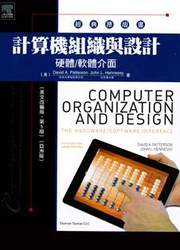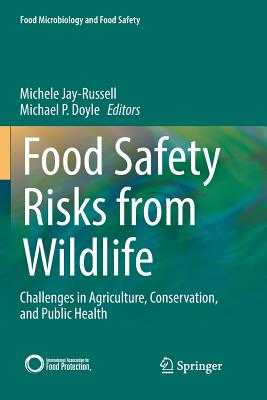Foodborne Pathogens: Virulence Factors and Host Susceptibility
暫譯: 食源性病原體:致病因子與宿主易感性
Joshua B. Gurtler, Michael P. Doyle, Jeffrey L. Kornacki
- 出版商: Springer
- 出版日期: 2017-06-28
- 售價: $7,960
- 貴賓價: 9.5 折 $7,562
- 語言: 英文
- 頁數: 652
- 裝訂: Hardcover
- ISBN: 3319568345
- ISBN-13: 9783319568348
海外代購書籍(需單獨結帳)
買這商品的人也買了...
-
 三菱可程式控制器 Q 系列 伺服定位模組 中文使用手冊
三菱可程式控制器 Q 系列 伺服定位模組 中文使用手冊$750$675 -
 精通 Linux 核心開發-設計與實作 Linux 核心的權威指南, 3/e (Linux Kernel Development, 3/e)
精通 Linux 核心開發-設計與實作 Linux 核心的權威指南, 3/e (Linux Kernel Development, 3/e)$680$537 -
 統計學與 Excel 資料分析之實習應用, 6/e
統計學與 Excel 資料分析之實習應用, 6/e$620$484 -
 802.11n 技術手冊 (802.11n: A Survival Guide)
802.11n 技術手冊 (802.11n: A Survival Guide)$400$340 -
 離散數學 (Rosen: Discrete Mathematics and Its Applications, 7/e)(授權經銷版)
離散數學 (Rosen: Discrete Mathematics and Its Applications, 7/e)(授權經銷版)$810$770 -
 WPF 編程寶典 -- 使用 C# 2012 和 .NET 4.5 (第4版) (Pro WPF in C# 2012: Windows Presentation Foundation in .NET 4.5)
WPF 編程寶典 -- 使用 C# 2012 和 .NET 4.5 (第4版) (Pro WPF in C# 2012: Windows Presentation Foundation in .NET 4.5)$1,374$1,305 -
 HC05 藍芽模組(主/從)
HC05 藍芽模組(主/從)$280$266 -
 $1,617Computer Organization and Design: The Hardware/Software Interface, 5/e (Asian Edition)(IE-Paperback)
$1,617Computer Organization and Design: The Hardware/Software Interface, 5/e (Asian Edition)(IE-Paperback) -
 精通 Python|運用簡單的套件進行現代運算 (Introducing Python: Modern Computing in Simple Packages)
精通 Python|運用簡單的套件進行現代運算 (Introducing Python: Modern Computing in Simple Packages)$780$616 -
 Webduino 馬克 1號
Webduino 馬克 1號$880$836 -
C++ 程式設計藝術, 9/e (國際版) (C++ How to Program, 9/e)
$780$702 -
 超圖解物聯網 IoT 實作入門 - 使用 JavaScript/Node.JS/Arduino/Raspberry
超圖解物聯網 IoT 實作入門 - 使用 JavaScript/Node.JS/Arduino/Raspberry$699$552 -
 $1,333Calculus, 8/e (Metric Version)(Hardcover)
$1,333Calculus, 8/e (Metric Version)(Hardcover) -
 Python 3.5 技術手冊
Python 3.5 技術手冊$520$411 -
 網站擷取|使用 Python (Web Scraping with Python: Collecting Data from the Modern Web)
網站擷取|使用 Python (Web Scraping with Python: Collecting Data from the Modern Web)$580$458 -
 iOS 10 App 程式設計實力超進化實戰攻略 : 知名 iOS教學部落格 AppCoda 作家親授實作關鍵技巧讓你不NG
iOS 10 App 程式設計實力超進化實戰攻略 : 知名 iOS教學部落格 AppCoda 作家親授實作關鍵技巧讓你不NG$720$562 -
 PHP 7 與 MySQL 基礎學習教室:PHP 與 MySQL/Mariadb、HTML 5 完美整合方案
PHP 7 與 MySQL 基礎學習教室:PHP 與 MySQL/Mariadb、HTML 5 完美整合方案$560$476 -
 資料結構 -- 使用 Java, 4/e
資料結構 -- 使用 Java, 4/e$520$411 -
 寫程式前就該懂的演算法 ─ 資料分析與程式設計人員必學的邏輯思考術 (Grokking Algorithms: An illustrated guide for programmers and other curious people)
寫程式前就該懂的演算法 ─ 資料分析與程式設計人員必學的邏輯思考術 (Grokking Algorithms: An illustrated guide for programmers and other curious people)$390$308 -
 大數據時代的演算法:機器學習、人工智慧及其典型實例
大數據時代的演算法:機器學習、人工智慧及其典型實例$400$316 -
 7天學會大數據資料處理—NoSQL:MongoDB入門與活用, 2/e
7天學會大數據資料處理—NoSQL:MongoDB入門與活用, 2/e$400$312 -
 Deep Learning|用 Python 進行深度學習的基礎理論實作
Deep Learning|用 Python 進行深度學習的基礎理論實作$580$458 -
 Python 網路爬蟲實戰
Python 網路爬蟲實戰$490$245 -
 看板實戰 : 用一張便利貼訓練出100分高效率工作團隊 (Kanban in Action)
看板實戰 : 用一張便利貼訓練出100分高效率工作團隊 (Kanban in Action)$560$476 -
 初探機器學習|使用 Python (Thoughtful Machine Learning with Python)
初探機器學習|使用 Python (Thoughtful Machine Learning with Python)$480$379
相關主題
商品描述
Foodborne illnesses continue to be a major public health concern. All members of a particular bacterial genera (e.g., Salmonella, Campylobacter) or species (e.g., Listeria monocytogenes, Cronobacter sakazakii) are often treated by public health and regulatory agencies as being equally pathogenic; however, this is not necessarily true and is an overly conservative approach to ensuring the safety of foods. Even within species, virulence factors vary to the point that some isolates may be highly virulent, whereas others may rarely, if ever, cause disease in humans. Hence, many food safety scientists have concluded that a more appropriate characterization of bacterial isolates for public health purposes could be by virotyping, i.e., typing food-associated bacteria on the basis of their virulence factors. The book is divided into two sections. Section I, “Foodborne Pathogens and Virulence Factors,” hones in on specific virulence factors of foodborne pathogens and the role they play in regulatory requirements, recalls, and foodborne illness. The oft-held paradigm that all pathogenic strains are equally virulent is untrue. Thus, we will examine variability in virulence between strains such as Listeria, Salmonella, Campylobacter, Cronobacter, etc. This section also examines known factors capable of inducing greater virulence in foodborne pathogens. Section II, “Foodborne Pathogens, Host Susceptibility, and Infectious Dose” , covers the ability of a pathogen to invade a human host based on numerous extraneous factors relative to the host and the environment. Some of these factors include host age, immune status, genetic makeup, infectious dose, food composition and probiotics. Readers of this book will come away with a better understanding of foodborne bacterial pathogen virulence factors and pathogenicity, and host factors that predict the severity of disease in humans.
商品描述(中文翻譯)
食源性疾病仍然是主要的公共衛生問題。特定細菌屬(例如,Salmonella、Campylobacter)或物種(例如,Listeria monocytogenes、Cronobacter sakazakii)的所有成員通常被公共衛生和監管機構視為同樣具有致病性;然而,這並不一定正確,這是一種過於保守的確保食品安全的方法。即使在同一物種內,致病因子也存在變異,以至於某些分離株可能具有高度致病性,而其他分離株則可能很少,甚至從未對人類造成疾病。因此,許多食品安全科學家得出結論,對於公共衛生目的,對細菌分離株的更合適的特徵描述可以通過病毒分型(virotyping)來進行,即根據其致病因子對與食品相關的細菌進行分型。本書分為兩個部分。第一部分「食源性病原體與致病因子」專注於食源性病原體的特定致病因子及其在監管要求、召回和食源性疾病中的作用。普遍認為所有致病菌株的致病性相同的觀念是不正確的。因此,我們將檢視如Listeria、Salmonella、Campylobacter、Cronobacter等菌株之間的致病性變異。本部分還探討了已知能夠誘導食源性病原體更高致病性的因子。第二部分「食源性病原體、宿主易感性與感染劑量」涵蓋了病原體根據與宿主和環境相關的多種外部因子入侵人類宿主的能力。其中一些因子包括宿主年齡、免疫狀態、遺傳組成、感染劑量、食品成分和益生菌。本書的讀者將對食源性細菌病原體的致病因子和致病性,以及預測人類疾病嚴重程度的宿主因子有更深入的了解。
































